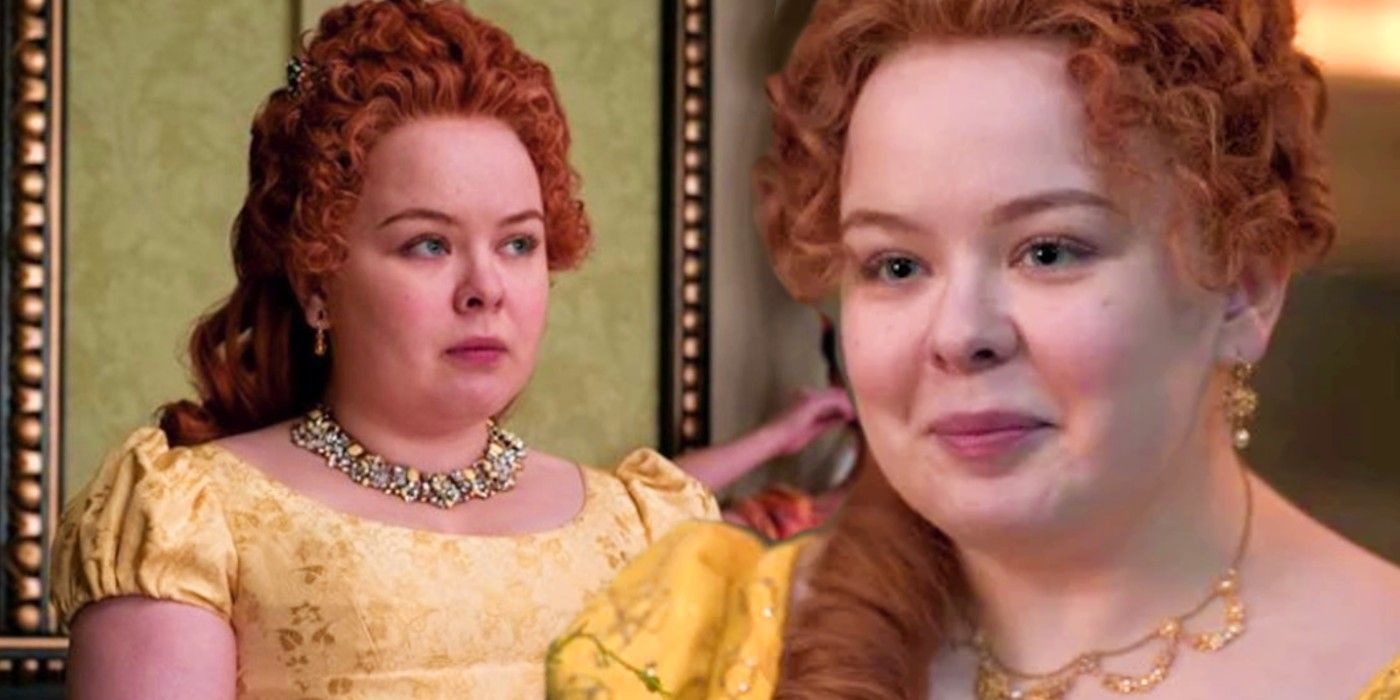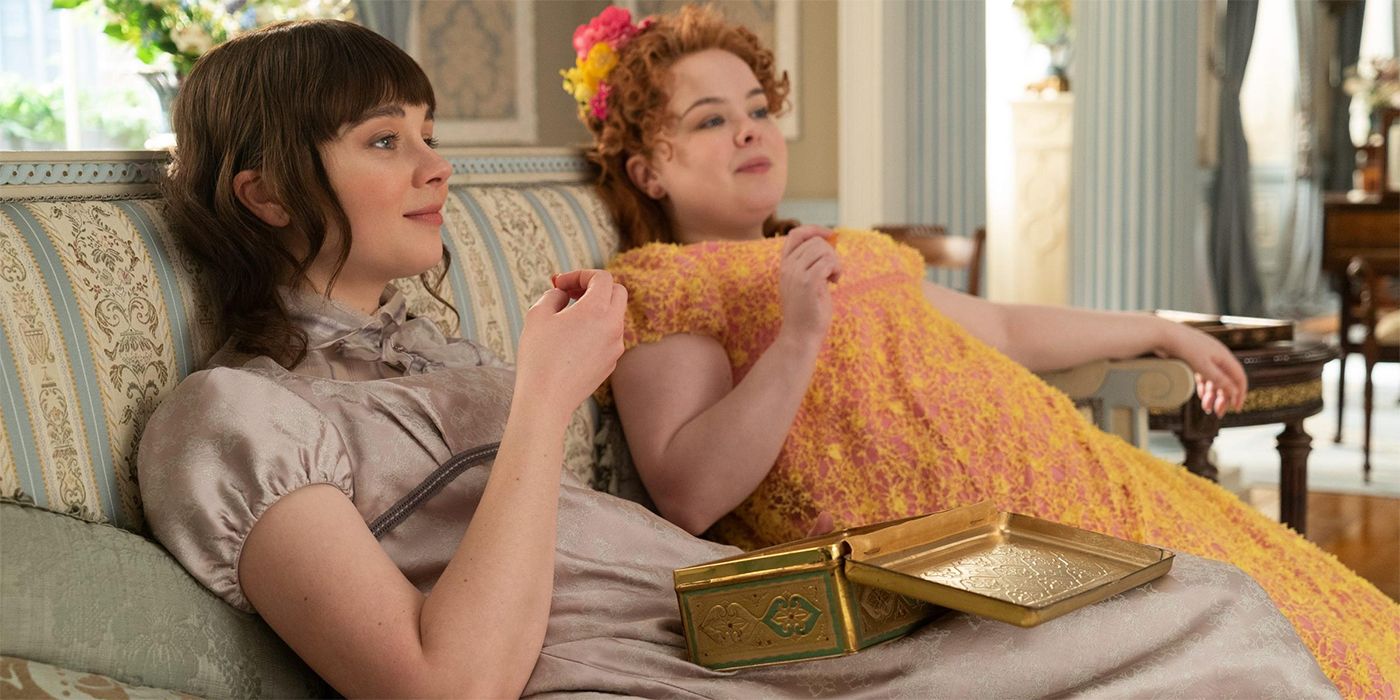Warning: Spoilers for Bridgerton season 1.
Netflix's Bridgerton season one ends with the huge revelation of who Lady Whistledown really is, copying the twist of Julia Quinn's novels, but it's a secret that's signposted throughout the season. One of the more subtle ways the message is secretly transmitted is in the way Penelope Featherington dresses and also both her and her family's oblivious reactions to her dresses. For a good deal of the first season, Pen wears yellow and at one point makes an exasperated joke about it, as if she hates the color choice, but it actually hides a secret loaded meaning.
At the end of Bridgerton season one, it is revealed that Penelope Featherington is the real ton resident behind the mysterious Lady Whistledown and her scandal-revealing Society Papers. It's not the most shocking of twists, because it has hints throughout, but someone in a more privileged position would have made sense, logically. Pen's motivation seems to be her mistreatment as a liminal figure overlooked by debutante society and forced into existing as an outsider. It's that status that allows her to operate in such a way, but Penelope's oddness in the context of even her own family should have set off alarm bells for Eloise Bridgerton on her quest to discover Whistledown's true identity.
And on top of that, her outfits act as an unconscious secret reveal of the Lady Whistledown truth too, because Penelope's choice of yellow - no matter how unfavored by Pen herself - offers some insight to those aware of Regency fashions. The fact that nobody else on the Bridgerton cast of characters, including those who pride themselves on being at the height of fashion and privilege carries its own message. Because yellow was actually the Regency era's most fashionable color and the idea of Pen being forced to wear it by her oblivious mother fits the Featheringtons' often comical misfit status (which is commented on at one point early in the season).
Regency era fashion tastes dictated that yellow (along with green, rose, blue, pale purples, and white) was very fashionable, so while Penelope turns her nose up at having to wear it, she is, in fact, professing herself to be "in vogue". Whether her ignorance of this fact is intentional is unclear, but it is telling that it is her family that chooses it for her, marking themselves as unaware of the true mark of good taste. Given that Lady Whistledown is the self-appointed paragon of virtue, taste, and fashion, it is fitting that she would be frequently seen in yellow as a subtle indicator.
Beyond that, yellow has symbolic connotations that fit Penelope's secret double life: the color is associated both with deceit and jealousy and also new life, intellect, and enlightenment. That speaks to both of Penelope's motivations: her treatment at the hands of the society that willfully pushes her to the side (which leads her to reclaim control for herself) and also the well-meaning pretense that she is doing good. Bridgerton's complexities carry over into Penelope's agenda, of course, because Penelope unwittingly reinforces the societal instruments of control she is suggested to be challenging. And the greatest tragedy is that ironically, given yellow's association with creativity, her policing of the artistic sub-culture of the ton that is so tied to self-expression and individualism is the biggest boundary to that sort of welcoming culture growing and welcoming her in as Penelope and not as Lady Whistledown.


